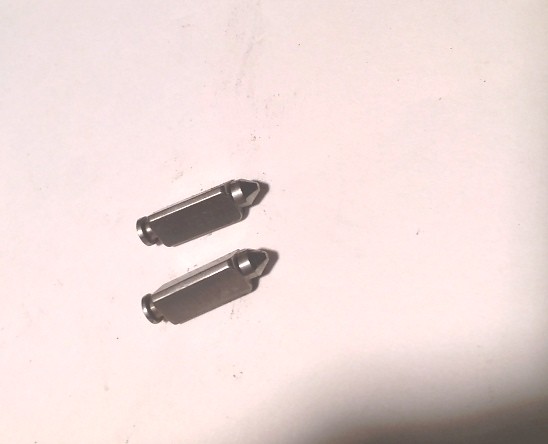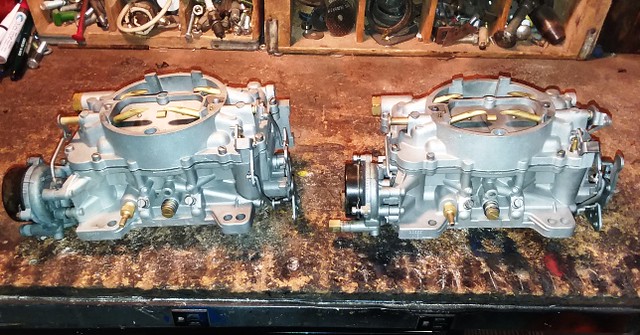When I decided to put the dual quads on the 57 and started looking around for AFBs I became concerned that I would have a problem finding affordable builders. I did luck out and found the 625 CFM AFBs though and got them rebuilt and ready to use. They weren’t my first choice but I’m pretty sure they will work out fine.
My first choice was a pair of early 60s Cadillac AFBs. I’d used a pair of these on my 65 Chevy (350 4 speed) years ago and really liked the way they ran. I had one sitting on the shelf and had keep my eyes open for a mate for it for years but never was lucky enough to find one.
It never fails, a couple of days after I got 625s rebuilt I found out a friend of mine had the Cadillac carb I wanted sitting on his shelf gathering dust. We ended up doing a bit of trading and it ended up in my shop.
 Cad AF
Cad AF by
M Patterson, on Flickr
I picked up a couple of kits and got them both taken apart and cleaned up. You could tell it had been a long time since anybody had been into to them (I think they had both had kits at least once sometime in the past). When was the last time you took a carburetor apart and it had steel needles (no “rubber” tips) in it?
 SN
SN by
M Patterson, on Flickr
So now I have 2 pairs of carbs to try out on the 57.
 Cad AFB 2
Cad AFB 2 by
M Patterson, on Flickr
These AFBs are a little unusual compared to most of the ones produced. They are 575 CFM and don’t have an idle speed adjustment screw. The throttle plates are closed at idle and the speed is adjusted with the brass air bleed screw located between the fuel mixture screws. As they are the early AFBs they have the also have the smaller 4 7/32” air cleaner base instead of the 5 1/8” used on the later AFBs. I found an outfit that sells aluminum adapter rings for the air cleaners so that I have a pair of those coming too.
I’m going to set both pairs of carbs up for synchronized and progressive linkage while the intake is still on the bench. So now I’m down to building 4 sets of carb linkage. Whatever set carbs I don’t end up using on the 57 will probably eventually find a home on something else around here.
As far as cleaning them it depends on how bad they are. I always soak them in a 5 gallon can of carburetor I have here (I'm not sure who made it, the can is 7 or 8 years old and I've had to replace the original can it was in....it might have been hydro-seal). Then it's spray can carb cleaner and compressed air especially thru the internal passages. A little steel wool and elbow grease usually works if there is stubborn gunk. Although I really hate doing it if they are internally salvageable but bad on the outside I have been known to seal everything up and bead blast the outside to clean them up. It takes a long time and a lot of carb cleaner to clean them afterward though. I've never had a problem with a carb I've done this to, but that is usually a last resort.

